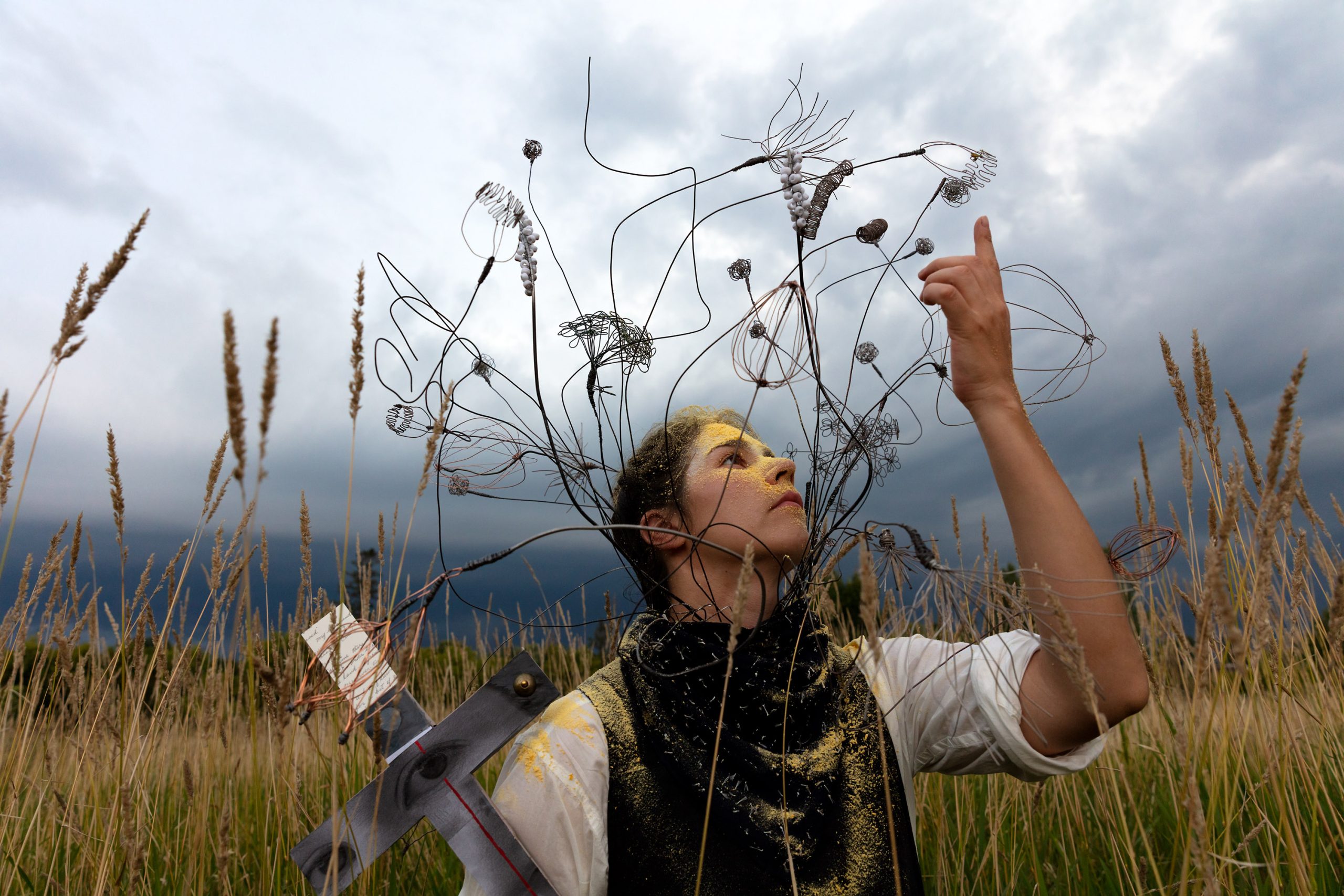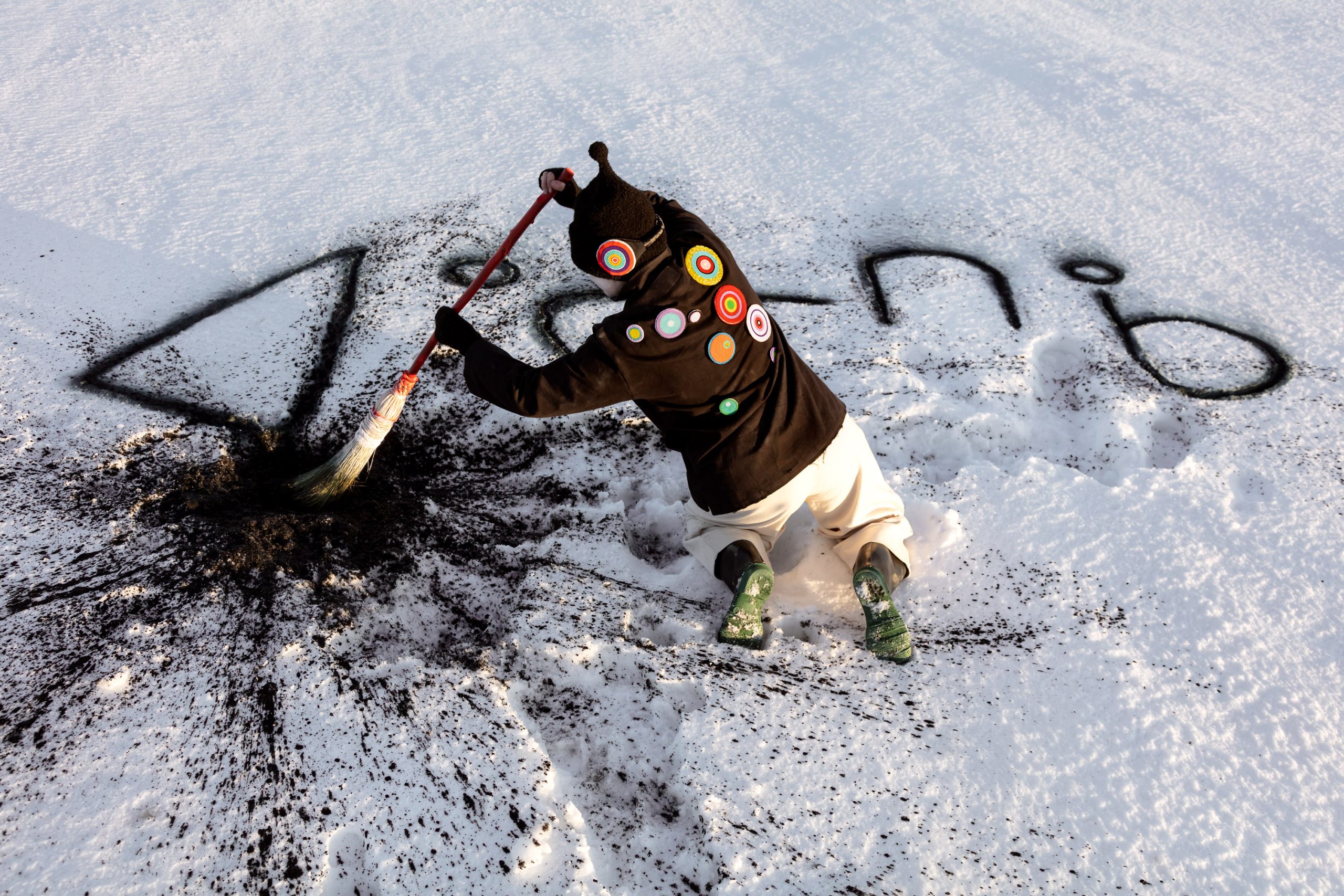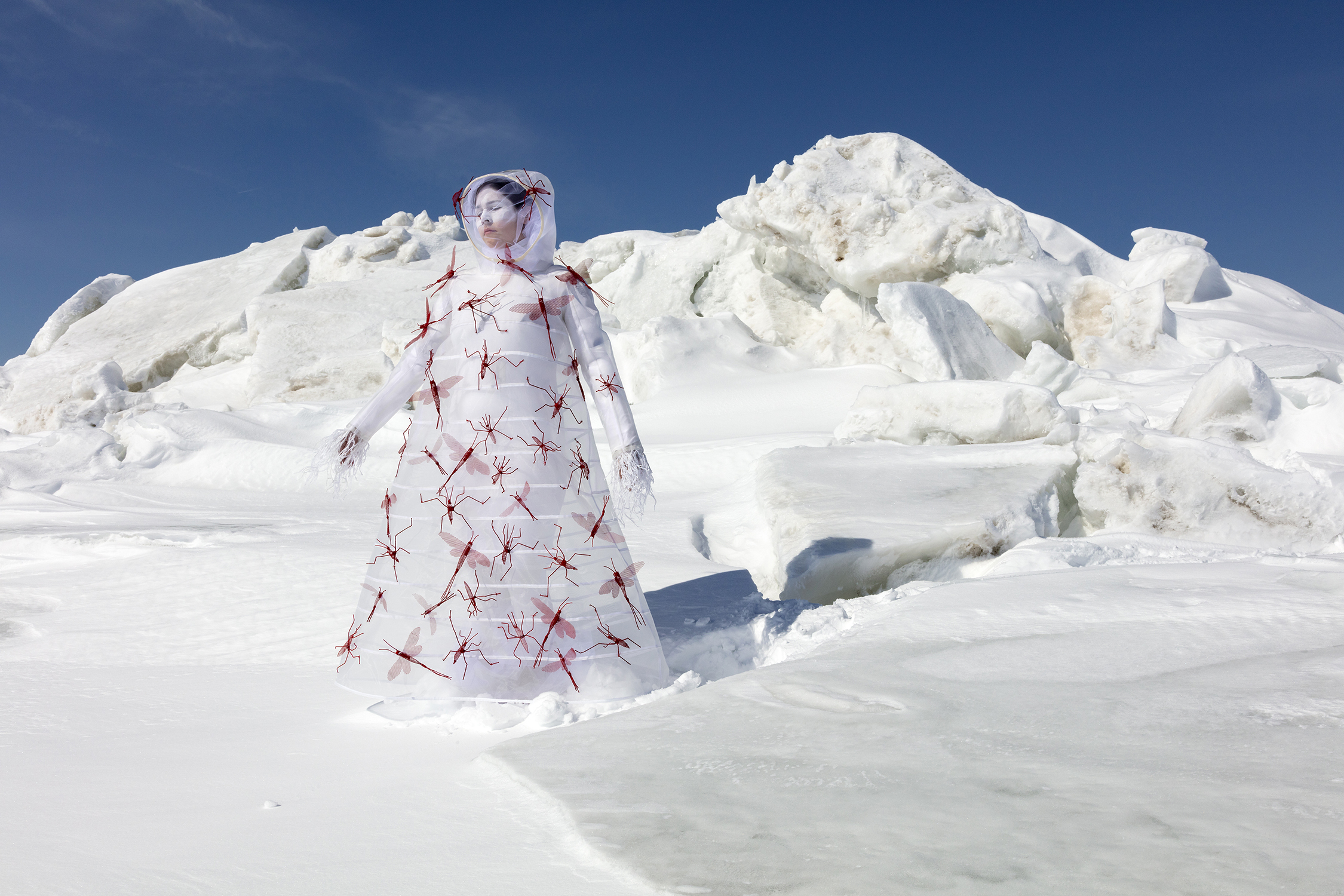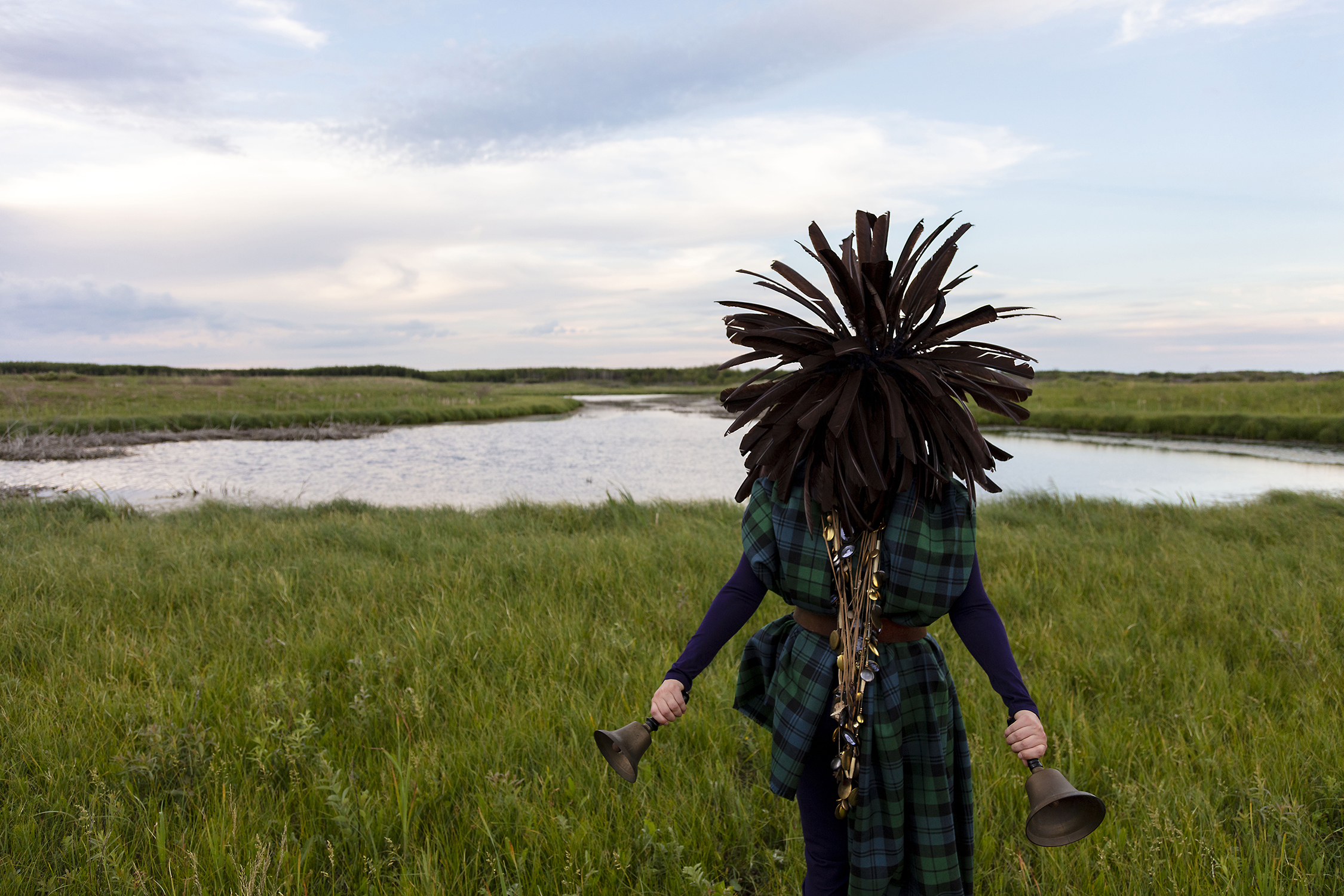In Celebration of the Indigenous History Month




Courtesy of the artist and Stephen Bulger Gallery and Pierre-François Ouellette art contemporain
Spotlight—Meryl McMaster and Immersive Magic Realism
Interview by Olga Haznaci
June is National Indigenous History Month in Canada, a time to recognize the rich history, heritage, resilience and diversity of First Nations, Inuit and Métis on this native land. As a translation provider for 40+ Indigenous languages in Canada, the Wintranslation team is working with talented, strong and devoted individuals and organizations that are part of the diverse Indigenous culture. We are proud and humbled to join in celebrating their cultural legacies and share with you today our conversation with artist Meryl McMaster.
Our cooperation with Meryl McMaster started with her exhibition in Urban Shaman and has since expanded to include several other galleries and art organizations. We are humbled by the patience and respect that was shown to the work of the translators and moved by the materials they worked on.
We sat down with Meryl to ask a few questions about her work and inspirations.
Could you tell me a bit about you and your heritage?
I’m originally from Ottawa but have roots in Saskatchewan. I come from two distinct cultures nêhiyaw (Plains Cree), Métis with British and Dutch ancestry. Currently, I live in Chelsea, Quebec with my husband and two daughters.
My father’s family is from Red Pheasant Cree Nation in Saskatchewan, and we are members of the Siksika Nation in Alberta. My nēhiyaw ancestors were nomadic hunter-gatherers on the great plains, relying on bison and other animals for food, materials, and everyday objects. Their way of life revolved around following the seasonal movements of the bison, living in easily disassembled tipis. Plants were also crucial, serving as food, medicine, and ceremonial elements. Unfortunately, 19th-century bison hunting, encouraged by governments and industries, had a devastating impact on my ancestors, nearly driving the bison population to extinction.
On my mother’s side, some of her family immigrated from Holland to New York in the 1700s and later moved to Canada during the American Revolution. They settled in Southern Ontario near the Saint-Lawrence River before eventually becoming farmers in Saskatchewan. Other maternal ancestors arrived from England in the early 1900s and became farmers in South Saskatchewan near the Great Grasslands.
In what ways do you hope your artwork can contribute to raising awareness and understanding of Indigenous cultures and issues?
From a young age, I’ve been fascinated by questioning, observing, and understanding the concept of selfhood. These reflections have influenced my artistic process, which revolves around exploring identity formation through lineage, history, culture, and our connection with the land.
To delve into these inquiries, I create large-scale dreamlike photographic self-portraits. These images transcend time, blending moments, lifetimes, generations, and geological eras. Drawing from my personal experiences and diverse ancestry, I construct site-specific scenes using handcrafted objects made over months in my studio. By merging actual and imagined experiences, my work aims to foster self-discovery, and understanding of our histories, lineage, and the interconnectedness of our world.
How important is language to your roots and to your work?
I didn’t grow up learning to speak my language of nēhiyawēwin (Plains Cree) because of the trickle-down effect of colonialism and assimilation that affected several generations of my family. Over the last several years I have made an effort to start learning my language as well as include it in my art as well. I think it is very important as it preserves our identities, values, and knowledge systems as Indigenous peoples. I have included translations of nēhiyawēwin in my artwork titles as well as poems and film scripts I have written.
How do you approach exhibiting your artwork in a gallery? Do you consider creating an immersive and culturally sensitive experience for viewers?
In gallery settings, I aim to immerse viewers in my artwork by presenting them in a large-scale format. Whether through prints or projections, I strive to make the images and films life-size or even bigger. This way, viewers become part of the scenes and landscapes, engrossing their field of vision. My goal is to transport them into the imagery, allowing them to momentarily forget the outside world.
My works reflect my connection and disconnection to my cultures, curiosity about the natural world, and exploration of my ancestral ties to this territory. While rooted in my personal experiences and bi-cultural identity, I aspire to address broader themes that resonate with others. I hope my work resonates with viewers and sparks contemplation on shared questions and ideas that accompany us throughout our lives.
We had several translation projects together, could you tell us a bit about those projects?
I’ve had a wonderful experience working with Win Translation. I’m grateful for their accessibility and extensive language offerings, particularly for Indigenous languages. Together, we’ve collaborated on various projects, translating my poems, work titles, exhibition texts, and even my first monograph, “Bloodline” (2023), entirely into nēhiyawēwin.
For this book, I had the privilege of working with three accomplished and respected women: Plains Cree musician Buffy Sainte-Marie, poet Louise Halfe, and Métis author and filmmaker Maria Campbell. I consider myself fortunate to have this opportunity to showcase my work alongside these incredible women and provide a resource for readers to engage with ideas in Plains Cree. It’s crucial to have more resources like this to preserve and make Indigenous languages accessible. I hope this book serves as a small contribution towards that goal.
Meryl McMaster’S work is currently featured through a solo traveling exhibition touring Canada called “Bloodline” and organized by the McMichael Canadian Art Collections of Toronto. The next stops include Remai Modern in Saskatoon, from July 21 to December 31, 2023, and the Musée d’art de Joliette in Québec from February to May 2024, with further exhibition dates around the country to be confirmed.
We are grateful to Meryl for her time and for sharing her story!
